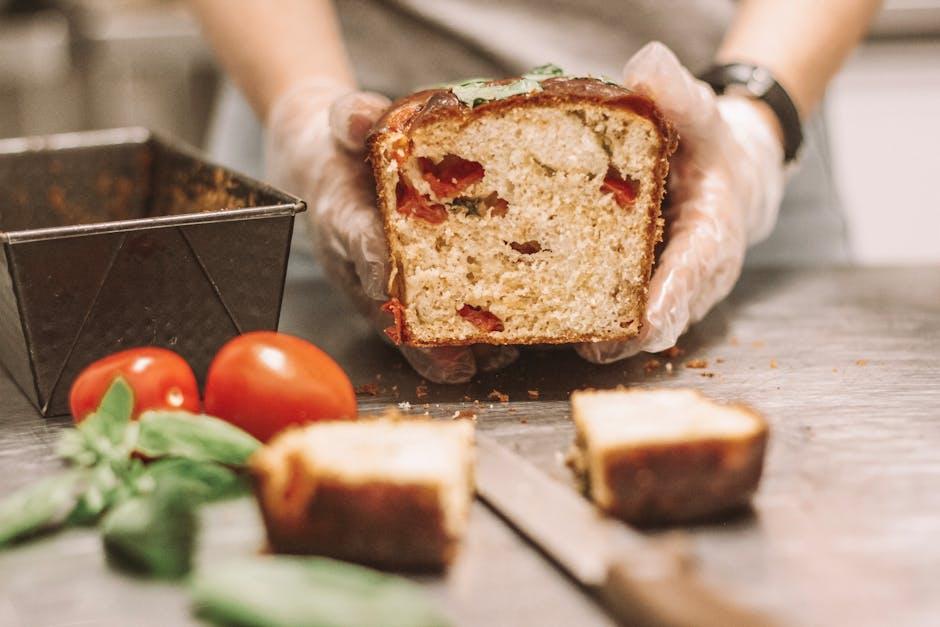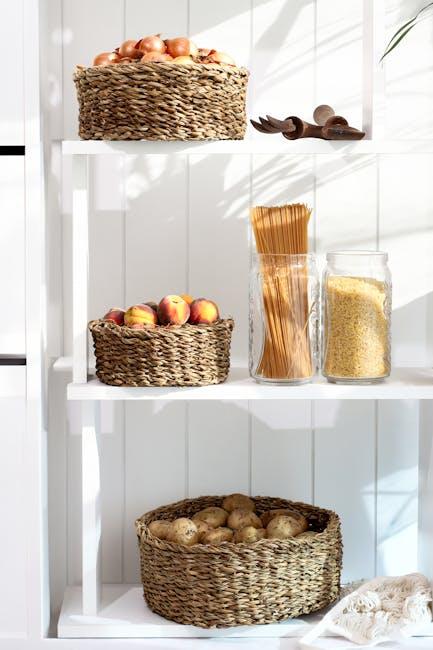In the whirlwind of modern life, finding time to cook nutritious meals every day can feel like a daunting challenge. Enter meal prepping-a simple yet powerful strategy that transforms the way we approach eating, turning chaos into calm and saving precious minutes during hectic weekdays. Whether you’re a busy professional, a dedicated parent, or someone looking to take control of your nutrition, mastering meal prep can be your secret weapon. This article will guide you through practical tips and creative ideas to help you efficiently prepare meals for the entire week, ensuring that healthy, delicious food is always within reach.
Planning Balanced Meals for Every Day

Crafting nutritious meals every day becomes effortless when you adopt a mindful approach to combining ingredients. Focus on incorporating a variety of food groups to satisfy your nutritional needs and please your palate. Include lean proteins like grilled chicken or tofu, complex carbohydrates such as quinoa or sweet potatoes, and plenty of fiber-rich vegetables to keep meals colorful and full of flavor. This approach not only enhances meal satisfaction but also supports sustained energy levels throughout the day.
To streamline your daily meal planning, consider balancing macro and micronutrients with a simple framework. Here’s a quick guide to help portion your plate effectively:
| Food Group | Portion Size | Examples |
|---|---|---|
| Proteins | 25% | Chicken, fish, beans, lentils |
| Carbohydrates | 35% | Brown rice, whole wheat, oats |
| Vegetables | 35% | Spinach, carrots, broccoli |
| Fats | 5% | Avocado, nuts, olive oil |
- Mix and match various ingredients to keep meals interesting and nutritionally diverse.
- Use herbs and spices to elevate flavor without added calories.
- Prepare components in bulk like roasted veggies or grains to save cooking time during the week.
Smart Shopping Strategies to Save Time and Money

Efficient shopping begins with a solid game plan. Before heading to the store, make a precise list categorized by meal types-breakfast, lunch, dinner, and snacks. This not only prevents impulse buys but also streamlines your trip, saving you valuable time. Consider the benefits of buying in bulk for staple ingredients like grains, beans, and frozen vegetables, which are perfect for long-term storage and versatile meal prep. Don’t forget to scout deals on seasonal produce; these often come at a lower price and add freshness to your meals.
Embrace the power of technology to maximize savings. Numerous apps track grocery prices, offer digital coupons, and alert you to local sales. Subscribing to store newsletters or loyalty programs can also unlock exclusive discounts and flash deals. When possible, opt for generic or store-brand products, which frequently offer the same quality as name brands at a fraction of the cost. The table below highlights some smart ingredient swaps that reduce expenses without compromising nutrition or flavor.
| Ingredient | Budget-Friendly Alternative | Benefits |
|---|---|---|
| Quinoa | Brown Rice | More affordable, high in fiber |
| Almond Butter | Peanut Butter | Cheaper, rich in protein |
| Greek Yogurt | Regular Yogurt | Lower cost, same probiotics |
| Fresh Herbs | Dried Herbs | Long shelf life, less waste |
Batch Cooking Techniques for Maximum Efficiency

Mastering the art of preparing multiple meals simultaneously is a game-changer in the world of meal prep. Prioritize ingredients that can be cooked together without compromising flavor or texture. For instance, roasting a variety of vegetables on a single tray or simmering grains alongside legumes can save precious time. Utilize versatile appliances like slow cookers and Instant Pots to handle different components at once, freeing up your stove for sautéing or baking. Always keep seasoning and cooking times in mind to ensure every dish reaches perfection without overcooking.
To maximize your efficiency, consider organizing your cooking workflow in a way that minimizes waiting and cleanup. Here are a few strategies to streamline the process:
- Pre-chop veggies: Store them in airtight containers to easily toss into any recipe.
- Batch cook proteins: Grill or bake chicken, tofu, or fish in large quantities and portion them as needed.
- Use modular recipes: Create base dishes that can be customized with different spices or sauces throughout the week.
| Step | Action | Efficiency Tip |
|---|---|---|
| 1 | Prep ingredients | Chop, rinse, and portion ahead |
| 2 | Start batch cooking | Use multiple cookware simultaneously |
| 3 | Cool and store | Label containers by day or meal |
Storing and Reheating Tips to Keep Meals Fresh Longer

To prolong the freshness of your prepped meals, invest in airtight containers that seal in flavor and moisture. Divide your dishes into portioned servings before refrigerating or freezing-this not only helps with easy grab-and-go meals but also minimizes repeated exposure to air. Label each container with the date of preparation to keep track of freshness and prioritize meals accordingly. Remember, foods stored in the fridge typically stay fresh for about 3 to 4 days, while items in the freezer can last up to 3 months without losing quality.
When it comes to reheating, be mindful of the method to avoid drying out or overcooking your meals. Use a microwave-safe cover to trap steam or add a splash of water when warming rice, pasta, or roasted vegetables, helping to maintain moisture. For evenly heated results, stir halfway through reheating. Below is a quick reference table for optimal reheating times and tips:
| Meal Type | Reheat Time (Microwave) | Tip |
|---|---|---|
| Rice & Grains | 2-3 minutes | Add water & cover |
| Protein (Chicken, Beef) | 3-4 minutes | Slice thin for even warming |
| Vegetables | 1-2 minutes | Stir halfway, avoid overcooking |
| Soups & Stews | 3-5 minutes | Stir frequently for uniform heat |
Insights and Conclusions
As the week unfolds, having a well-prepared meal plan can be your secret weapon against the chaos of busy days. By dedicating a little time upfront to meal prep, you empower yourself to enjoy nourishing, stress-free meals every day. Whether you’re a seasoned chef or a kitchen novice, these tips can transform your weekly routine, turning the question of “What’s for dinner?” into a simple, satisfying answer. So gather your ingredients, set your schedule, and embrace the calm confidence that comes from planning ahead-your future self will thank you.











